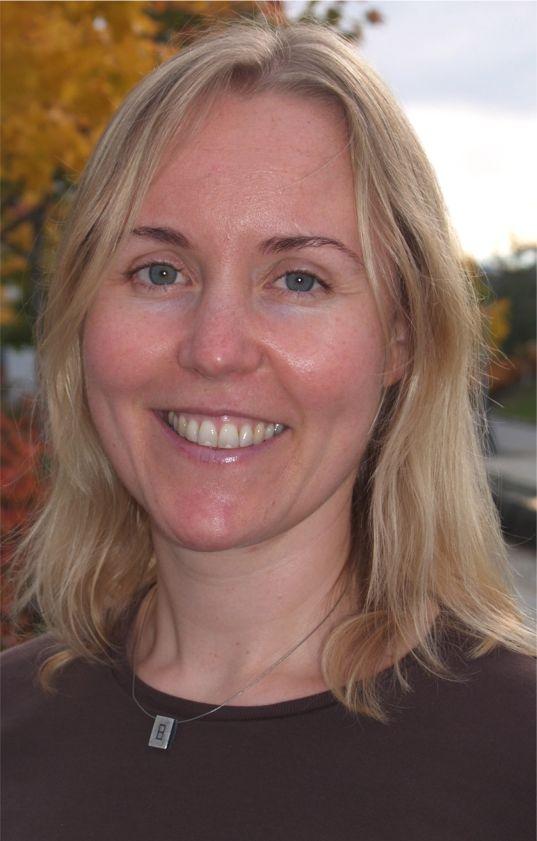
– In Norway, a great deal of time and resources have been spent on campaigns to recruit women to study computing subjects, Lagesen says. In spite of this the proportion of girls studyingin computing subjects is on the whole low and to some degree declining. Many researchers, and also computing professionals, are surprised by this, not least because many initiatives have been taken to get more women to choose computing.
– President of the British Computer Society, professor Wendy Hall, recently told a seminar that it seems to be easier to send someone to the moon than to get more women to study computing. The problem is to do with attitudes towards both gender and computing, and it raises challenges for feminist theory and politics, Larsen says.
Forget the hacker!
A central theme in research on gender and computing is the focus on a hacker or nerd masculinity and hacker culture. We have an image of the hacker as an antisocial young male who spends most of his time in front of his computer and who has learned computing in his bedroom. – The hacker serves as a central tool for understanding IT for school studentspupils, researchers and politicians. One reason for this is that the status of the hacker has been exaggerated by no end of media publicity. The hacker has become a symbol of male hegemony within computing. He is an ambiguous figure, esteemed but also hated and scorned, something that many boys and most girls do not want to emulate.
Lagesen believes that it’s time to forget hackers. – Focusing on this figure only helps to maintain a dichotomous and stereotypical understanding of gender and computer technology, which produces a narrow and misleading idea of who computer technicians are, and what they do. Research that raises the status of hackers can easily reinforce rather than reduce the problem, because it oversimplifies the problem and confirms computing as unsuitable for women.
– It is often said that a girl at a computer is like a fish out of water . The question that is often asked is: Is it the girls or the subject that there’s something wrong withis the problem which must be addressed?, and must be changed? This has, at times become quite a politicised debate, she points out. – A debate that has a tendency to make the topic of computing and girls into a question of either/or. In my thesis I have attempted to develop an understanding of gender and computing as intertwined with one another, Lagesen says. Computer technology and the skills used in IT are a part of modern gender.
Inclusion v Exclusion
Earlier research has been most interested in why women do not choose computing.
– I wanted instead to focus on the relationship between girls and computing in order to find out what is was that actually made some girls choose to study such a subject. I wanted to study inclusion rather than exclusion. This provides a different perspective and opens the way for a theoretical understanding of gender and technology that focuses on how they are related to one another, both for women and men, Lagesen says.
In her opinion the traditional focus on exclusion often results in promoting the status quo. You become preoccupied with why girls don’t become better represented among those choosing computing subjects, or that the change is slow. – At the bottom center? of such descriptions you will often find the dichotomy of gender: Women are like this and men are like that. Women like to communicate and men like to program, for example. Focusing on inclusion encourages more emphasis on dynamic processes and ambiguity, in our understanding of gender, of technology and how the two interact, says Vivian A. Lagesen.
Lagesen’s empirical data was collected at NTNU (The Norwegian University of Science and Technology) and the University of Malaya, and consists of interviews, fieldwork, literature and visual materials. Included in this is her study of the inclusion strategy “Girls and computing” at NTNU.
That project was responsible for an increase in girls’ representation in computer studies at NTNU from 6 to 38 per cent between 1996 and 1997. This is an astounding result, even internationally. At the centre of the project was a promotional campaign that encouraged women to apply. The promotional campaign was repeated over several years, with cinema adverts, brochures and an aggressive drive directed at girls in sixth form college (Am. High School). Lagesen explains that the campaign presented portrayed women as mostly interested in talking with others, as social, and having little interested in technical issues, while men were presented portrayed as narrowly interested in technical matters and as single-minded hackers.
– The positive side of this is that it raised girls’ awareness of the subject. It made girls feel wanted and welcome. The substantial media interest in the project reinforced this impression. However, my analysis also shows that the message of gender stereotypes communicated in the adverts also had negative consequences as well. By communicating the idea that girls are have little interested in technology, and are only interested in the social activities, girls that were actually interested in technology were presented as peculiar. Moreover, NTNU risked recruiting girls that were expecting a non-technical programme of study, says Lagesen.
The importance of numbers!
The project “Girls and computing” also used a quota system to increase girls’ representation in the subject. In Lagesen’s opinion this was quite an important instrument. The importance of the relative number of women on the course is not just about the social environment and problems related to being a minority, it also contributes to changing the symbolic gendering of the subject. – This can seem banal, but it is an important fact, she emphasizes.
In order to illustrate her point Lagesen draws parallels with medicine, which was previously considered a masculine career. Today, more than half of medical students are women, and our conception of doctors has changed.
– Malaysia is another example. There, women make up half the student body in computer subjects. In some subjects they are in the majority. The result of this is that computing is not seen as masculine or as most suitable for men. It is seen as more ambiguous, or multi-gendered.
Malaysia
– Malaysian girls see the possibilities in computer technology. Additionally, it is important that computing is considered a suitable career path for women, says Lagesen. It is indoor work and is not physically demanding. This is seen as compatible with what it is to be a womana woman is supposed to be. – Moreover, it is important that education leads to well-paid work and so contributes to financial independence and security, Lagesen points out.
Parents and other family members are a major influence on what girls choose to do. It is interesting to note that many of the female students studying computing would like an academic career. Such a career provides flexible work and therefore it is easily integrated with family responsibilities. At the university in Malaysia, where Lagesen did her research, half of the computer science students were girls. Women also made up the majority of academic staff within computing subjects. – Within the Faculty of Computer Science and Information Technology all four department directors are women and the deacon is also a womenwoman, Lagesen says.
In Norway, the impression is that subjects in computing are more suited to men than to women. – In Malaysia the fact that computing does not have the same masculine gender symbology connected to it challenges our thinking about computing as masculine. To look upon computer technology as masculine is just one of several interpretations. My thesis shows how both gender and computer technology are complex, dynamic and flexible constructions. Gender is ambiguous, but also heterogeneous in the sense that technology is involved in the modern production of gender. We have to stop reproducing an opposition between femininity and technology, concludes Lagesen.
Translated by Matthew Whiting KILDEN
Vivian Anette Lagesen presented her PhD thesis with the title ’Extreme make-over? The making of gender and computer science’ in April 2005. The thesis was submitted to the Department of Interdisciplinary Culture Studies at The Norwegian University of Science and Technology (NTNU) at Trondheim, Norway. She is now employed in the same department as a post-doctoral researcher, where she is working on the projects ’Learning from transdisciplinarity. Gender and ICT as windows to understanding management of knowledge’ and ’Likestilling i informasjonssamfunnet? En komparativ studie av kjønn og yrkeskulturer i IKT-bransjen’ ('Equal opportunities in Information community? A comparative study of gender and work culture in the IT industry'). These studies are a part of a larger project that will study male and female IT workers in various types of IT companies in Malaysia, Norway and California. Their work will include investigating the production of knowledge, the work culture and balancing the demands of a work life and a family life in these three different cultural contexts.
